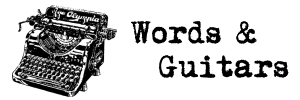The Mission: Singles As and Bs
A new archive collection from the goth rock heavyweights.

In an era of musical pic ‘n mix, where even the most unlikely of influences show face, few corners of rock history lie as unloved as late 80s goth. Occasionally, the proggier bits of Fields of the Nephilim emerge in more florid Scandinavian metal, but when discussing the latest bands, phrases like ‘the new Ian Astbury’ or ‘kicking ass like classic Balaam & The Angel’ tend not to form part of the conversation.
As such, it’s easy to forget that some goth(ish) acts were about as big as ‘alt. rock’ got back in the 80s. ‘She Sells Sanctuary’ and ‘This Corrosion’ were both chart hits and bonafide student disco floorfillers, while The Mission, formed from the ashes of the original Sisters of Mercy line-up, were one of the genre’s front-runners, racking up three top 20 albums before grunge and Madchester made their unabashed bombast seem a little hackneyed. Led by the ever quotable Wayne Hussey, their wine-fuelled antics made them music press darlings – if never critically lauded – and headlining at Reading Festival and support slots with U2 proved their commercial clout. Even The Eskimos, the rag-tag band of fans who followed them from gig-to-gig, were infamous enough to secure their own column inches.
This new, self-explanatory, compilation gathers their heyday material with the Mercury and Vertigo labels and it’s true that, musically at least, this is a style that casts very little shadow over today’s scene – the spidery, treated guitars are neither particularly indie or classic rock and essentially continue with the latter-day Sisters sound; indeed, a handful of Mission numbers were demo-ed before the Sisters split in 1985. There’s no denying Hussey knew his way round a chorus, with tracks like the waltz of ‘Stay With Me’ typified by his rich baritone, powerful dynamics and plenty of opportunity for choreographed, arms-aloft ‘dancing’. They covered Neil Young (a few years before he was re-evaluated as the ‘godfather of grunge’), Patti Smith and Aerosmith, giving an indication of where their hearts lay, but it was the anthemic ‘Wasteland’ and ‘Deliverance’ that got them on Top of the Pops. Lyrically, Hussey leaned heavily on the Pre-Raphaelite Book of Portentous Cliché (if there an opportunity to rhyme ‘crystal flower’ with ‘ivory tower’ then he would) but generally, audiences were too blootered on cider and black to worry about such detail.
Led Zeppelin’s Jon Paul Jones produced 1988’s Children, signalling their embrace of wider, FM classic rock (‘Tower of Strength’ was their ‘Kashmir’) and the promise of US success, but the partying was already causing cracks within the band – guitarist Simon Hinkler temporarily left during an American tour in 1990 – and, as public interest began to wane, an ill-advised shift into more contemporary fare did little to reverse their decline. Masque, released just a couple of months after Nevermind, seemed over-produced by comparison. Even so, this period threw up the U2-ish ‘Never Again’ and the Levellers-lite pop of ‘Like A Child Again’, suggesting Hussey’s muse didn’t quite leave him, but that audience tastes had simply moved on.
Hussey has intermittently kept the band alive ever since, with audiences in Europe and South America proving most loyal. Goth was to re-emerge in name at least, but its icons were Marilyn Manson, Trent Reznor and Amy Lee – not the floppy-hatted Mission or flour-encrusted Morricone-isms of ‘The Nephs’. A slight shame perhaps as Singles … is an entertaining reminder of a less pretentious – and certainly less nihilistic – time for British rock.
